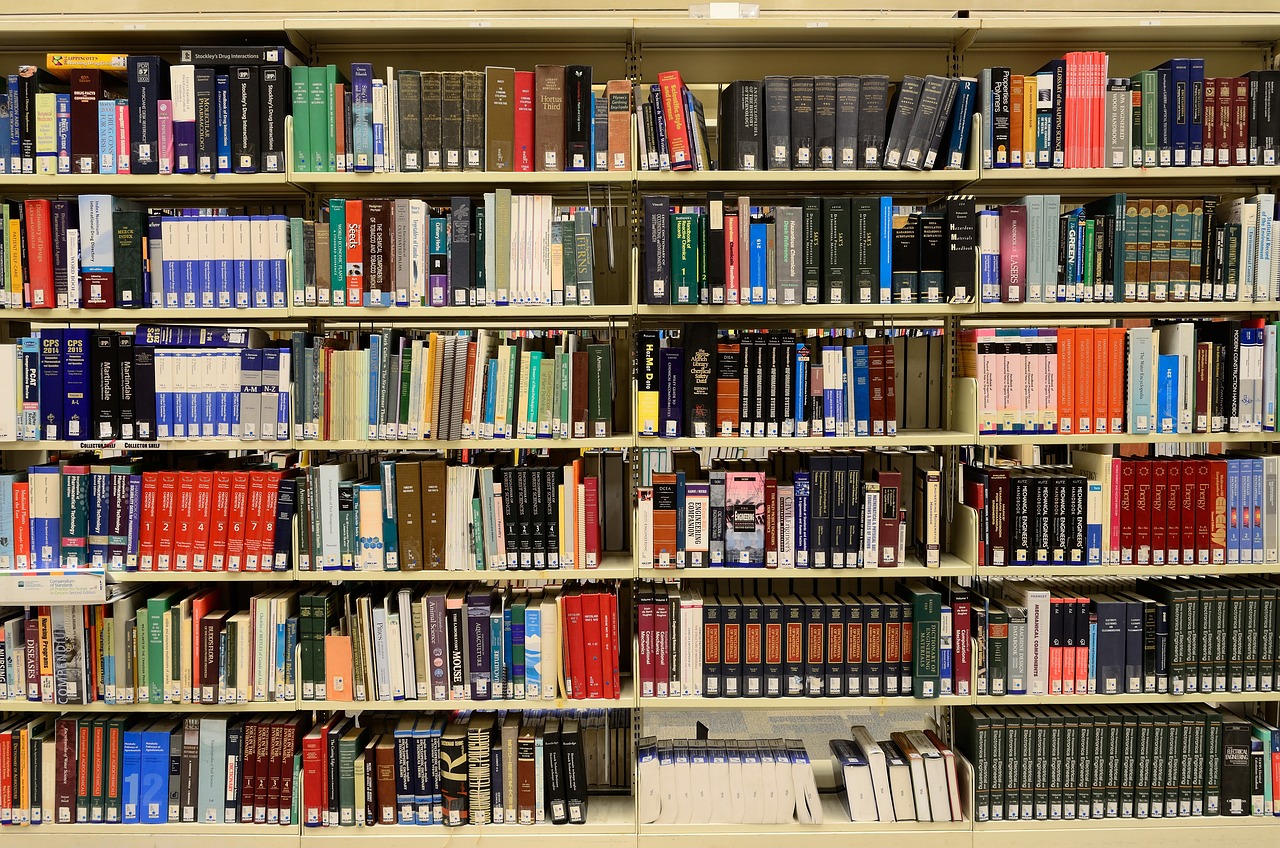Setting Up a Productive Study Space for Students
Creating an environment conducive to learning is crucial for students as it significantly impacts their academic performance and focus. The study space plays a vital role in shaping students' productivity and success. By carefully designing and organizing this space, students can optimize their learning potential and achieve their educational goals.
When choosing the right location for a study space, it is essential to select a quiet area with minimal distractions. A well-lit environment can enhance concentration and reduce eye strain, allowing students to focus better on their studies. Natural light is beneficial, but supplementing it with appropriate artificial lighting can create an optimal studying atmosphere.
Organizing study materials is key to efficiency and time management during study sessions. Keeping textbooks, notebooks, and stationery neatly arranged not only saves time but also reduces the likelihood of getting distracted while searching for necessary materials. Utilizing shelves, drawers, and storage containers can help maintain an organized and clutter-free study space.
Comfortable seating and ergonomic furniture are essential for maintaining good posture and physical well-being during long study hours. A supportive chair and a well-designed desk setup can prevent discomfort and fatigue, enabling students to focus on their academic tasks without physical distractions.
Personalizing the study space with motivational quotes, inspirational pictures, or plants can create a warm and inviting atmosphere that enhances morale and motivation. Adding personal touches to the environment can make studying more enjoyable and help students stay engaged and committed to their academic pursuits.
To minimize distractions, it is crucial to remove electronic devices, unnecessary clutter, and any other potential interruptions from the study space. By creating a dedicated area free from distractions, students can maintain focus and concentration on their studies, leading to improved learning outcomes.
Establishing a study schedule and routine is essential for effective time management and maximizing the use of the study space. By setting aside dedicated study hours and following a consistent routine, students can develop a sense of discipline and structure that enhances their overall productivity and academic performance.
Incorporating storage solutions such as shelves, drawers, and storage containers can help keep the study space organized and optimized for efficiency. By utilizing storage options effectively, students can easily access study materials and resources, reducing the time spent searching for necessary items and increasing study productivity.
By implementing these strategies and tips, students can create a productive study space that fosters focus, productivity, and academic success. A well-designed and organized study environment can significantly impact students' learning experience and contribute to their overall educational journey.

Choosing the Right Location
Creating an environment conducive to learning is essential for students. This article explores tips and strategies for setting up an effective study space that promotes focus, productivity, and academic success.
Selecting a quiet and well-lit area in the home can enhance concentration and reduce distractions, helping students stay focused on their studies. A study space near a window can provide natural light, which is known to boost mood and productivity. Additionally, positioning the study area away from high-traffic areas and noise can create a peaceful environment conducive to deep concentration.
Consider setting up the study space in a corner of a room or a designated study room if available. This separation can mentally signal the transition to a focused study mode, helping students enter a productive mindset. Furthermore, choosing a location with minimal visual distractions, such as facing a blank wall or using room dividers, can aid in maintaining attention on academic tasks.
When selecting the right location, it is crucial to consider the ergonomics of the space. Ensure that the study area is well-ventilated and maintains a comfortable temperature to support extended study sessions. By carefully choosing the location of the study space, students can create an environment that fosters concentration, creativity, and academic success.
Keeping study materials such as textbooks, notebooks, and stationery neatly organized can save time and improve efficiency during study sessions. Utilizing shelves, drawers, and storage containers can help students categorize and access their materials easily. Consider labeling storage spaces to maintain a systematic organization that enhances productivity.
Providing a comfortable chair and desk setup that promotes good posture can prevent physical discomfort and support extended study periods. Adjustable chairs and desks can help students customize their seating position to maintain proper alignment and reduce the risk of musculoskeletal issues. Additionally, incorporating ergonomic accessories like wrist rests and footrests can further enhance comfort and focus during study sessions.
Adding personal touches like motivational quotes, pictures, or plants can create a welcoming and inspiring study environment that boosts morale and motivation. Personalizing the study space with items that hold sentimental value or evoke positive emotions can help students feel connected to the space and increase their overall enjoyment of studying. By infusing personal elements into the study area, students can create a space that reflects their unique personality and preferences.
Removing electronic devices, clutter, and other distractions from the study space can help students maintain focus and concentration on their academic tasks. Consider implementing digital detox periods during study sessions to limit screen time and enhance cognitive engagement. Creating a distraction-free zone can significantly improve productivity and efficiency in studying.
Ensuring proper lighting with a mix of natural and artificial light sources can reduce eye strain and create a well-lit environment conducive to studying. Positioning study areas near windows to maximize natural light exposure can positively impact mood and alertness. Additionally, incorporating adjustable lighting options such as desk lamps or overhead lights can provide flexibility in creating the ideal study ambiance based on individual preferences.
Utilizing shelves, drawers, and storage containers to keep the study space organized and clutter-free can enhance productivity and efficiency. Assign specific storage areas for different types of study materials to maintain order and accessibility. Regularly decluttering and organizing the study space can streamline study sessions and promote a clear mindset for learning.
Establishing a consistent study schedule and routine can help students manage their time effectively and make the most of their designated study space. By allocating dedicated study times each day and setting clear goals for each session, students can optimize their learning potential. Incorporating breaks and rewards into the study schedule can also prevent burnout and maintain motivation over the long term.

Organizing Study Materials
When it comes to creating an effective study space for students, organizing study materials plays a crucial role in promoting productivity and efficiency. By keeping textbooks, notebooks, stationery, and other resources neatly arranged and easily accessible, students can save time and focus more on their studies. A clutter-free environment not only enhances concentration but also contributes to a smoother study session.
One effective way to organize study materials is by utilizing storage solutions such as shelves, drawers, and storage containers. These storage options not only help in keeping the study space tidy but also ensure that essential materials are within reach when needed. By categorizing and arranging study materials systematically, students can streamline their study process and minimize the time spent searching for resources.
Additionally, incorporating a designated study area for each subject or topic can further enhance organization. By assigning specific areas or containers for different subjects, students can easily locate relevant materials without confusion. This method not only aids in efficient studying but also reinforces a sense of order and structure within the study space.
Moreover, creating a study material inventory or checklist can be beneficial in tracking and managing resources. By listing down essential materials needed for each subject or assignment, students can ensure that they have everything required for productive study sessions. Regularly updating and maintaining this inventory can prevent last-minute scrambles and enhance preparedness.
Overall, organizing study materials is a fundamental aspect of setting up a productive study space. By implementing effective organization strategies and maintaining a clutter-free environment, students can optimize their study sessions, improve focus, and ultimately achieve academic success.

Comfortable Seating and Ergonomics
Creating an environment conducive to learning is essential for students. This article explores tips and strategies for setting up an effective study space that promotes focus, productivity, and academic success.
When it comes to studying for long hours, having comfortable seating and good ergonomics is crucial. Imagine trying to focus on your textbooks while sitting on a hard, uncomfortable chair that leaves your back aching. It's like trying to run a marathon in flip-flops – not an ideal situation for success. By investing in a chair that supports your back and promotes good posture, you are setting yourself up for a study session that won't leave you feeling physically drained. Ergonomics is not just a fancy word; it's about ensuring that your study space is designed to keep you comfortable and focused.

Personalizing the Space
When it comes to setting up a productive study space for students, personalizing the environment plays a crucial role in creating a space that is not only conducive to learning but also inspiring and motivating. Personalization goes beyond just arranging study materials; it involves adding elements that resonate with the student's personality and preferences.
One effective way to personalize the study space is by incorporating motivational quotes that resonate with the student's goals and aspirations. These quotes can serve as constant reminders of why they are putting in the effort to study and can help maintain motivation during challenging study sessions.
Another way to personalize the space is by adding pictures or artwork that evoke positive emotions and create a sense of comfort. Surrounding oneself with images that bring joy or inspiration can have a significant impact on the overall study experience, making the space more inviting and engaging.
Plants can also be a great addition to a study space, not only for their aesthetic appeal but also for their ability to improve air quality and create a calming atmosphere. Having greenery in the study area can help reduce stress and increase focus, contributing to a more productive study session.
Personalizing the study space is all about creating a space that reflects the student's personality and preferences, making it a place where they feel comfortable, motivated, and ready to learn. By adding personal touches that resonate with the student, the study space can become a sanctuary for focused and effective studying.

Minimizing Distractions
When it comes to creating a productive study space, minimizing distractions is crucial. Distractions can derail focus and hinder academic progress. One effective way to minimize distractions is by removing electronic devices from the study area. Phones, tablets, and laptops can easily tempt students to veer off course and engage in non-study related activities. By keeping these devices out of sight, students can maintain better concentration on their learning tasks.
Another important aspect of minimizing distractions is decluttering the study space. A cluttered environment can lead to a cluttered mind, making it challenging for students to concentrate. Utilizing storage solutions such as shelves, drawers, and containers can help keep the study area organized and free of unnecessary items. A tidy space promotes a clear mind, allowing students to focus better on their studies.
In addition to removing electronic devices and decluttering, creating a quiet atmosphere in the study space is essential. Background noise from television, conversations, or outside traffic can disrupt concentration. Consider using noise-cancelling headphones or playing soft instrumental music to drown out external sounds and create a peaceful study environment. By minimizing auditory distractions, students can enhance their ability to absorb information and stay focused.
Furthermore, setting boundaries with family members or roommates regarding study time can also help minimize disruptions. Clearly communicating the importance of uninterrupted study periods can reduce the likelihood of unnecessary interruptions. Establishing a mutual understanding of when the study space is off-limits for non-academic activities can contribute to a more conducive learning environment.
Overall, minimizing distractions in the study space is essential for students to maximize their learning potential. By creating a quiet, organized, and interruption-free environment, students can enhance their focus, concentration, and ultimately, their academic success.

Effective Lighting
When it comes to creating a productive study space, the importance of effective lighting cannot be overstated. Proper lighting plays a crucial role in reducing eye strain, enhancing focus, and creating a conducive environment for studying. A well-lit study area can significantly impact a student's ability to concentrate and retain information.
One of the key considerations for effective lighting is to incorporate a mix of natural and artificial light sources. Natural light not only brightens up the space but also helps regulate the body's internal clock, promoting a sense of alertness and well-being. Positioning the study desk near a window can provide ample natural light during the day, reducing the reliance on harsh artificial lighting.
When using artificial lighting, opt for LED or daylight bulbs that mimic natural light as closely as possible. Harsh fluorescent lighting can cause glare and strain the eyes, leading to discomfort and reduced productivity. Additionally, adjustable desk lamps can offer focused lighting for specific tasks, allowing students to control the brightness and direction of light based on their needs.
Creating a balance between natural and artificial lighting sources is key to establishing a well-lit study space that promotes comfort and productivity. By paying attention to lighting design and ensuring adequate illumination, students can optimize their study environment for maximum learning efficiency.

Incorporating Storage Solutions
Creating an environment conducive to learning is essential for students. This article explores tips and strategies for setting up an effective study space that promotes focus, productivity, and academic success.
When it comes to setting up a productive study space, incorporating storage solutions is crucial for maintaining organization and efficiency. By utilizing shelves, drawers, and storage containers, students can keep their study materials neatly arranged and easily accessible.
Having designated storage spaces for textbooks, notebooks, stationery, and other study essentials not only helps in decluttering the study area but also streamlines the study process. Imagine trying to focus on studying with papers strewn everywhere like a tornado hit your desk. It would be chaotic and counterproductive, right?
By implementing storage solutions, students can create a sense of order and structure in their study space, making it easier to locate and retrieve necessary materials. A well-organized environment can significantly boost productivity and minimize the time wasted searching for misplaced items.
Moreover, storage solutions can also contribute to a visually appealing study space. Imagine a room with everything neatly tucked away in its place, creating a serene and inviting atmosphere for studying. It not only enhances the aesthetic appeal of the space but also promotes a sense of calm and focus.
Additionally, incorporating storage solutions allows students to customize their study area according to their preferences and study habits. Whether they prefer open shelves for easy access or closed cabinets for a clutter-free look, having storage options tailored to their needs can enhance their overall study experience.

Creating a Study Schedule
Establishing a study schedule is like creating a roadmap for academic success. By setting aside specific times for studying, students can effectively manage their workload and stay on track with their learning goals. A well-structured study schedule not only helps in organizing study sessions but also ensures that students allocate sufficient time to each subject or task.
When creating a study schedule, it's essential to consider individual preferences and peak productivity hours. Some students may find it beneficial to study in the morning, while others may be more productive during the evening. By identifying the most productive times of the day, students can schedule their study sessions accordingly to maximize efficiency.
Furthermore, incorporating breaks into the study schedule is crucial for maintaining focus and preventing burnout. Short breaks between study sessions allow the brain to rest and recharge, improving overall retention and cognitive performance. By including designated break times in the study schedule, students can avoid feeling overwhelmed and maintain a healthy balance between studying and relaxation.
Creating a visual study schedule can also be a helpful tool for students to stay organized and motivated. Using color-coded blocks or a calendar format, students can easily track their study sessions, deadlines, and upcoming exams. Visualizing the study schedule not only enhances time management skills but also serves as a visual reminder of the tasks at hand.
Moreover, flexibility is key when creating a study schedule. Life can be unpredictable, and unexpected events may arise that disrupt the planned study routine. By allowing for flexibility in the schedule and incorporating buffer times, students can adapt to changes without feeling overwhelmed or stressed. Flexibility enables students to adjust their study sessions as needed while maintaining a sense of control over their academic responsibilities.
In conclusion, creating a study schedule is a fundamental step in optimizing study space for students. By establishing a consistent routine, considering individual preferences, incorporating breaks, visualizing the schedule, and maintaining flexibility, students can enhance their time management skills, boost productivity, and achieve academic success.
Frequently Asked Questions
- How can I create a productive study space for students?
To create a productive study space, start by choosing a quiet and well-lit location in the home. Organize study materials neatly, provide comfortable seating with good ergonomics, personalize the space with motivational elements, minimize distractions, ensure effective lighting, incorporate storage solutions, and establish a study schedule.
- Why is it important to minimize distractions in a study space?
Minimizing distractions in a study space is crucial as it helps students maintain focus and concentration on their academic tasks. By removing electronic devices, clutter, and other distractions, students can enhance their productivity and efficiency during study sessions.
- How can proper lighting impact a student's study environment?
Proper lighting, including a mix of natural and artificial light sources, can reduce eye strain and create a well-lit environment that is conducive to studying. Good lighting not only enhances visibility but also plays a significant role in creating a comfortable and inviting study atmosphere.



















